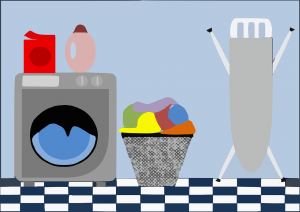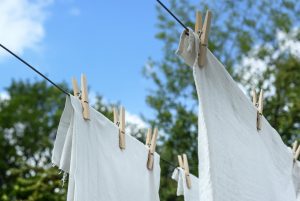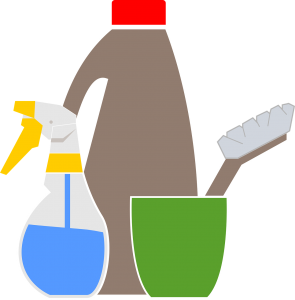
Clothing stains can be incredibly embarrassing when they happen, but they don’t have to ruin your clothes and affect your budget. While there will always be those stubborn stains that refuse to come out, many stains can be easily removed with just a little bit of knowledge and a few minutes of your time.
Time is of the Essence
The first rule of successful stain removal is to act quickly. The longer you leave the stain on your clothes, the harder it will be to get out. If you can’t immediately treat the stain, try blotting it with cold water until you can properly treat it later. Avoid the temptation to use hot water or bar soap, since both may actually set many stains.
General Tips

Even if you don’t find or treat a stain immediately, make sure you check clothes for stains before you throw them in the laundry. Consider having a designated area for family members to place stained clothing. This allows you to pre-treat stains before they are washed.
If you find a stain, first blot up any excess liquid, or remove excess solids. Treat the stain in a well-ventilated room, using the gentlest removal method first and progressing to more harsh chemicals only if needed. Rinse or launder clothing between treatments, and never mix different stain removers. Heat sets stains, so do not put your clothes in the dryer until the stain has been completely removed.
Know What You’re Working With
Be aware of what kind of fabric you’re working with. Check the care label to ensure the item is washable. Take non-washable items to the dry cleaner. Test stain removers on a hidden part of the clothing to ensure they don’t damage the fabric or cause discoloration.
It’s also important to know what kind of stain you’re battling. Not all stains are created equal, but knowing the type of stain will tell you a lot about how to treat it. Classify the stain into one of the following categories, and choose a treatment method accordingly.
- Protein Stains– Baby formula, blood, cream, egg, ice cream, milk, mud, vomit, feces
- Use cold water! Hot water will cook the protein and make the stain much harder to remove.
- Soak in cold water, then rub fabric against itself under cold running water. Wash in warm water with heavy-duty detergent.

- Oil-Based Stains– Automotive oil, bacon fat, butter, gasoline, mayonnaise, salad dressing
- Pretreat the stain with a commercial stain-removal product or liquid dish soap. Then, wash using heavy-duty detergent with hot water.
- Tannin Stains– Alcoholic beverages, berries, coffee, fruit juice, tea, washable ink, tomato juice
- Never treat tannin stains with natural soap (or detergents containing natural soap)! Instead, wash in hot water with laundry detergent.
- Dye Stains– Felt-tip pen, grass, Kool-Aid, mustard, color bleeding
- Focus on removing the pigment using a bleach product like all-fabric powdered bleach, liquid chlorine bleach, isopropyl alcohol, or white vinegar. Then, wash in hot water with heavy-duty detergent.
- Combination Stains– Ballpoint ink, crayon, barbeque sauce, ketchup, chocolate, makeup
- First, treat as an oil-based stain.
- Then, treat as a dye stain.
- Unknown Stains
- Start by soaking in cold water. Then try a commercial stain-removal product. Only then should you wash with detergent and warm/hot water. If the stain remains, use a bleach product.
Be Patient and Persistent
The most stubborn stains may require multiple treatments or several rounds of the same treatment. Be patient, and keep trying. However, resist the temptation to use excessive force, as too much rubbing may damage the item, remove the color, or spread the stain.
Create a Stain Kit
It’s much easier to treat clothing stains in a timely manner if you already have the supplies on hand. Put together  a stain kit with common stain treatments, including:
a stain kit with common stain treatments, including:
- Absorbent materials for mopping up excess and applying spot treatments
- Bleach/pigment removal products
- All-fabric powdered bleach
- Liquid chlorine bleach
- Hydrogen peroxide
- White vinegar
- Rubbing alcohol
- Commercial spot treatments and pre-soak powders
- Dish soap
- Other stain removal supplies, like cotton balls, Q-tips, eyedropper, nail brush or old toothbrush, and containers for soaking stains
Include a cheat sheet with common clothing stains and their treatments. Alternatively, bookmark this comprehensive, searchable list of stain solutions from University of Illinois Extension, or check out Iowa State University Extension’s Quick ‘n Easy Stain Removal Guide.


Love this. I’m going to share it!
Great summary on stain fighting — including a “tool kit” to have ready!